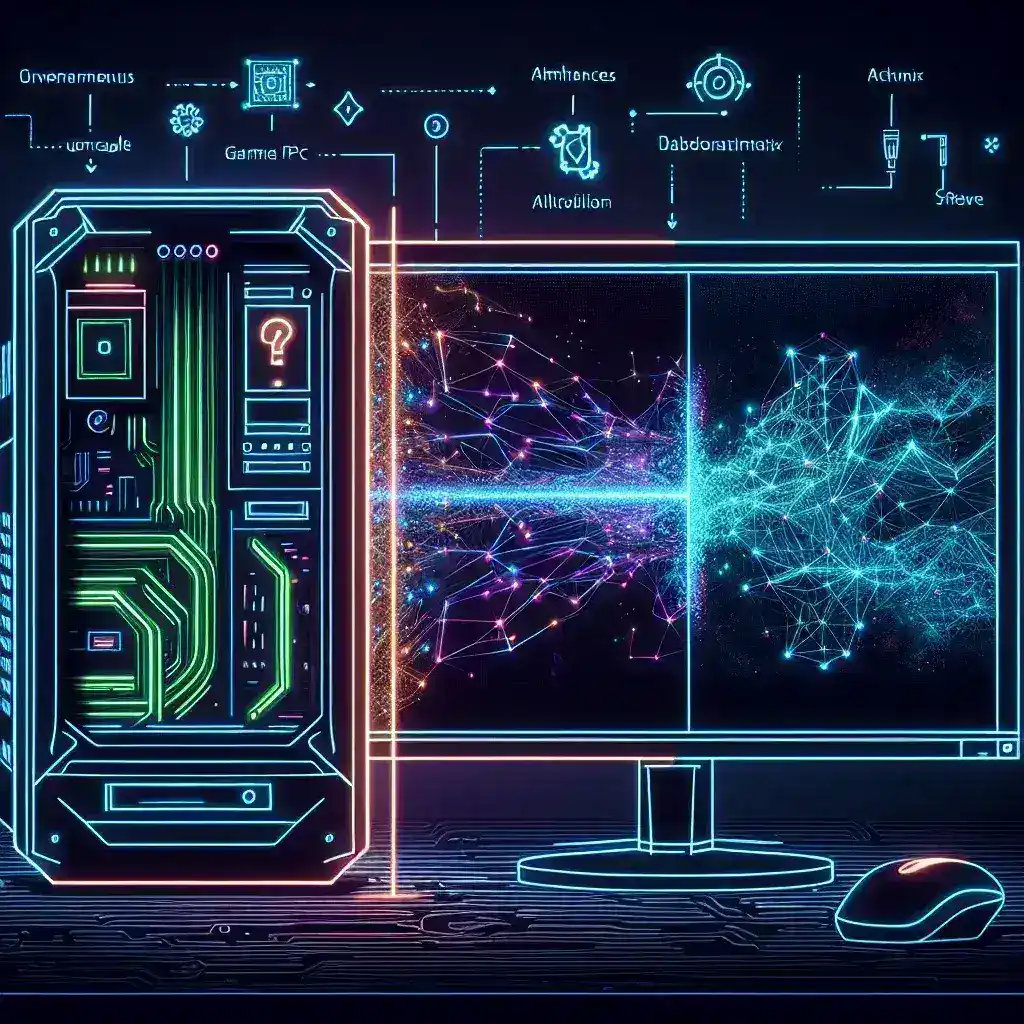In recent years, gaming PCs have seen significant advancements in various technologies, including artificial intelligence (AI). One of the breakthrough innovations driven by AI is upscaling technology, which substantially improves gaming visuals without the need for superior hardware. This article delves into how gaming PCs handle AI-enhanced upscaling technologies, offering a detailed analysis of their workings and the benefits they bring to the gaming experience.
To begin, let’s have a look at the traditional versus AI-enhanced upscaling techniques in gaming:
| Aspect | Traditional Upscaling | AI-Enhanced Upscaling |
|---|---|---|
| Resolution Enhancement | Simple pixel duplication with basic interpolation | Advanced algorithms with deep learning for higher quality |
| Resource Usage | Relatively lower GPU utilization | Requires high-performance GPUs with AI capabilities |
| Image Quality | Moderate improvement, prone to artifacts | Superior image quality with minimal artifacts |
Understanding Upscaling in Gaming
Upscaling in gaming refers to the method of rendering a game at a lower resolution and then increasing it to higher resolutions using various techniques. This approach essentially allows gamers to experience higher resolution visuals without demanding excessive computational power from their hardware.
Traditionally, upscaling utilized techniques such as bilinear or bicubic interpolation. These methods are computationally inexpensive but often result in a loss of visual quality and can introduce artifacts. AI-enhanced upscaling, on the other hand, leverages deep learning techniques to provide more refined and higher-quality visuals.
AI-Enhanced Upscaling Technologies
AI-enhanced upscaling technologies have garnered considerable attention for their ability to significantly enhance visual quality in gaming. Here are some of the pioneering technologies in this space:
NVIDIA DLSS (Deep Learning Super Sampling)
NVIDIA’s DLSS is one of the most recognized AI-enhanced upscaling technologies. It utilizes deep learning neural networks to upscale lower resolution images in real-time while maintaining high visual fidelity. The technology involves the following steps:
- Rendering at Lower Resolution: Games are rendered at a lower native resolution, which reduces the demand on the GPU.
- AI Training: A neural network, pre-trained on high-quality images, enhances these lower-resolution images.
- Upscaling: The processed images are then upscaled to higher resolutions, ensuring minimal loss in quality.
DLSS offers a significant performance boost, allowing gamers to experience higher frame rates without compromising on visual quality. It is particularly advantageous for 4K gaming, where the GPU workload is significantly high.
AMD FidelityFX Super Resolution (FSR)
AMD’s FidelityFX Super Resolution (FSR) aims to compete with NVIDIA’s DLSS. Although it doesn’t use deep learning, it provides an alternative that facilitates upscaling across different hardware platforms:
- Spatial Upscaling: FSR uses spatial upscaling, an algorithm that applies to each frame independently, without needing temporal data from previous frames.
- Engine Integration: Integrates directly into the game engine, making it versatile across multiple platforms and hardware configurations.
- Improved Performance: By reducing the computational load on the GPU, FSR enhances gaming performance and supports higher frame rates.
While FSR may not achieve the same level of quality as DLSS due to the absence of AI training, it still offers a valuable option for gamers seeking performance improvements.
Impact on Gaming Experience
The influence of AI-enhanced upscaling technologies on gaming is profound. Here are some of the key impacts:
Improved Visual Fidelity
AI-enhanced upscaling significantly enhances the visual fidelity of games. By applying sophisticated algorithms, these technologies reduce artifacts and ensure crisper, clearer images, even at higher resolutions. This improvement is critical for gamers who demand the highest quality visuals.
Enhanced Performance
These technologies free up computational resources by allowing the game to render at lower resolutions. This reduction in processing demand helps in achieving higher frame rates, contributing to a smoother and more immersive gaming experience.
Broader Accessibility
AI-enhanced upscaling technologies make high-quality gaming accessible to users with mid-range hardware. Gamers who cannot invest in the latest GPUs can still enjoy a visually rich experience without compromising on performance.
Future Prospects of AI-Enhanced Upscaling
The future of AI-enhanced upscaling technologies looks promising, with continued advancements on the horizon. Here are a few anticipated trends and developments:
Enhanced Algorithms
As AI models become more sophisticated, we can expect further enhancements in upscaling algorithms. These improvements will likely provide even higher quality visuals with better performance optimization.
Industry Standardization
With companies like NVIDIA and AMD pushing the boundaries of AI-enhanced upscaling, we may see standardization of these technologies, making them more broadly adopted across the industry. This standardization could lead to more game developers incorporating such technologies into their titles seamlessly.
Integration with Ray Tracing
Ray tracing technology is already revolutionizing gaming visuals by providing realistic lighting and reflections. Combining AI-enhanced upscaling with ray tracing could offer an unparalleled gaming experience, merging stunning visuals with high performance.
Adaptation Across Platforms
As AI-enhanced upscaling becomes more versatile, we may see its adoption across not just PCs but also gaming consoles and mobile devices. This cross-platform integration will ensure a consistent, high-quality gaming experience regardless of the device.
Conclusion
AI-enhanced upscaling technologies represent a significant leap forward in gaming technology. By leveraging advanced algorithms and deep learning, these technologies offer improved visual fidelity, enhanced performance, and broader accessibility for gamers. As the gaming industry continues to evolve, the role of AI-enhanced upscaling is set to become even more prominent, shaping the future of gaming experiences worldwide.

